





Aminosol-Neo
Application instruction:
 Aminosol-Neo – the combined means for parenteral food filling shortage of amino acids and electrolytes in an optimum ratio.
Aminosol-Neo – the combined means for parenteral food filling shortage of amino acids and electrolytes in an optimum ratio.
Form of release and structure
Dosage form – solution for infusions of 10% or 15%: colourless or light yellow, or light brown liquid with transparent structure (on 500 or 1500 ml in glass bottles, in a cardboard pack of 1 or 10 bottles complete with the holder for a bottle).
Content of Aminosola-Neo active agents is 1000 ml of 10% or 15% of solution:
- L-lysine: 6,6 g or 11,1 g that 9,31 g or 15,66 g of a L-lysine of monoacetate are equivalent;
- L-leucine: 7,4 g or 8,9 g;
- L-izoleytsin: 5 g or 5,2 g;
- L-valine: 6,2 g or 5,5 g;
- L-methionine: 4,3 g or 3,8 g;
- L-phenylalanine: 5,1 g or 5,5 g;
- L-threonine: 4,4 g or 8,6 g;
- L-alanine: 14 g or 25 g;
- L-histidine: 3 g or 7,3 g;
- L-arginine: 12 g or 20 g;
- L-proline: 11,2 g or 17 g;
- L-serine: 6,5 g or 9,6 g;
- L-tyrosine: on 0,4 g in each form;
- L-tryptophane: 2 g or 1,6 g;
- Taurine: 1 g or 2 g;
- Glycine: 11 g or 18,5 g.
Energy value of solution: 10% – 400 kcal/l (1680 kJ/l), 15% – 600 kcal/l (2520 kJ/l), osmolarity 990 or 1505 ¼Äß¼/l respectively, pH – 5,5-6,5.
Auxiliary components: ice acetic acid, water for injections.
Besides, in 15% solution L-malic acid contains.
Indications to use
- Full or partial parenteral food with addition of carbohydrates, fatty emulsions and electrolytes;
- Prevention of deficit and compensation of loss of liquid and proteins in case of impossibility of enteral meal: at heavy gastrointestinal pathologies (inflammatory diseases, obstruction, malabsorption of intestines, intestinal fistulas, pancreatitis), hyper metabolic states (extensive burns, injuries, sepsis) and other cases demanding parenteral food (malignant new growths, the period of preparation for an operative measure and after operation).
Contraindications
- Age up to 18 years;
- Heart failure in a decompensation stage;
- Metabolic acidosis;
- Heavy liver and/or renal failure;
- Hypoxia;
- Shock;
- Period of pregnancy and breastfeeding.
With care it is recommended to appoint Aminosol-Neo to patients with liver diseases, a diabetes mellitus, essential arterial hypertension, at sepsis.
Route of administration and dosage
Aminosol-Neo it is intended for intravenous (in/in) drop maintaining in one of the central veins.
The doctor appoints a dose individually, considering the patient's weight, weight of metabolic disturbance and the clinical need of an organism for amino acids.
It is necessary to apply only solution with transparent structure!
The recommended average daily dose for 10% of solution: from calculation for 10-20 ml on 1 kg of weight that corresponds to 1-2 g of amino acids on 1 kg of weight of the patient a day. Speed of infusion should not exceed 20-35 drops a minute that will provide receipt of 1 ml of solution on 1 kg of weight 60 minutes. The maximum daily dose – 20 ml on 1 kg of weight.
The recommended average daily dose for 15% of solution: on 6,7-13,3 ml on 1 kg of weight of the patient (1-2 g of amino acids on 1 kg a day). The maximum rate of administering – 0,67 ml on 1 kg of weight 60 minutes. The maximum daily dose – 13,3 ml on 1 kg.
As a rule, the daily dose for the patient weighing 70 kg has to correspond to 470-930 ml, and rate of administering – to 16 drops a minute.
Correction of a usual dose is recommended to patients with a renal failure: without dialysis – the dose of proteins on 1 kg of weight has to correspond to 0,6-1 g a day, at the patients who are on dialysis – on 1,2-2,7 g on 1 kg a day.
At a liver failure daily dosing has to be in limits of 0,8-1,1 g on 1 kg of weight.
Side effects
Use of Aminosola-Neo can cause a lack of an organism of folic acid therefore the accompanying appointment is recommended to the patient of folates.
Special instructions
The arginine which is one of drug components can cause decrease in level of concentration of phosphorus and increase the content of potassium in plasma, especially at patients with a diabetes mellitus.
Not to allow development of a hyperpotassemia against the background of administration of arginine, the sick diabetes mellitus (1 and 2 types) and to patients in stressful states recommends to appoint administration of insulin along with Aminosolom-Neo.
Before administration of drug it is necessary to be convinced of tightness of a bottle!
Medicinal interaction
Not to allow uncontrollable addition to Aminosolu-Neo of other medicines.
At simultaneous use of solution of drug:
- Aminophyllinum and thiazide diuretics – increase the content of insulin in blood;
- Oral contraceptives, are oestrogenic – can promote increase in concentration of a growth hormone, lower the insulin and glyukagonovy answer to arginine;
- Spironolactonum – causes a severe form of a hyperpotassemia.
Pharmaceutical we will combine with ampicillin, amikacin, tsefotaksimy, doxycycline, tseftriaksony, erythromycin, gentamycin, chloramphenicol, netilmitsiny, penicillin, tetracycline, clindamycin, piperatsilliny, Vancomycinum, Tobramycinum, cyclophosphamide, Aminophyllinum, Cimetidinum, Cytarabinum, dopamine, phytomenadionum, famotidine, ftoruratsily, folic acid, heparin, Chlorpromazinum, furosemide, insulin, metildopy, calcium a gluconate, lidocaine, Metoclopramidum, nizatidiny, a methotrexate, Methylprednisolonum, morphine, Norepinephrinum, ranitidine, propranolol, Riboflavinum, digoxin.
Because of availability of Aminosol-Neo arginine it is impossible to combine using sodium thiopental.
Terms and storage conditions
To store in the place protected from light at a temperature of 15-25 °C. To protect from children.
Period of validity – 2 years.
According to researches, the women drinking several glasses of beer or wine in a week have the increased risk to develop breast cancer.

For the city dweller the fitness is the most convenient sport. It is enough to acquire the subscription to the gym to receive to a toast...
Section: Articles about health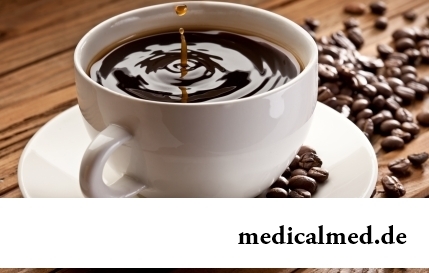
Coffee – favourite drink of many. For the last decades it more than once already declared very harmful, extremely useful and even necessary for normal life activity. In spite of the fact that this product became for us usual for a long time, exists much...
Section: Articles about health
"Epilepsy" doctors made the diagnosis in antique times. Displays of an illness and pattern of its development are very well studied. However for nonspecialists this disease remains to not less mysterious, than in the ancient time. Many delusions are connected with epilepsy, and it sometimes very unpleasantly affects quality of life of patients and their relatives. In this article we will try to dispel the most known of similar myths....
Section: Articles about health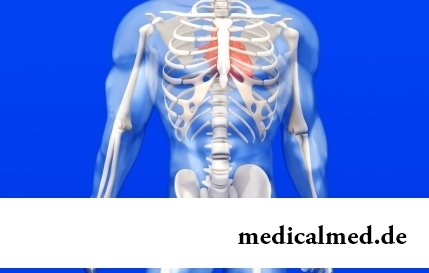
For many women the word "fat" sounds as a sentence. In aspiration to an ideal figure they try to exclude, first of all, from with...
Section: Articles about health
Any of us is not insured from a heavy illness of the loved one. Happens and so that someone from family members becomes the bed patient, and remains in such state for a long time. It extremely suppresses both the most injured, and all it to...
Section: Articles about health
Antibiotics - - it is possible to call the chemical compounds suppressing growth of bacteria the break in the field of medicine which allowed to save mankind from many diseases incurable earlier: tuberculosis, plague, syphilis and many others. The contribution of drugs to rescue of people from epidemics of dangerous infections is huge, however at careless use antibiotics are capable to cause to an organism serious damage. Negative action can be shown in the form of easing of immunity, disturbance of balance of microflora in кишеч...
Section: Articles about health
The sudden heat on all body which is followed by perspiration and a cardiopalmus – the phenomenon familiar to many people. Most often t...
Section: Articles about health
The state of health of the person in many respects depends on food. The organism will well function if during food it receive only useful substances, necessary vitamins and microelements. In this case there will be no problems with digestion, with лишн...
Section: Articles about health
The majority of gynecologic diseases prove three main signs, each of which speaks about need of a visit to the gynecologist. Certainly, it is possible to establish the exact diagnosis only after inspection, but on the basis of some signs it is possible to assume existence of this or that pathology. Let's consider symptoms of the female diseases which are found most often....
Section: Articles about health
To look healthy and means well-groomed not only to be pleasant to people around, but also to feel strong, sure and taken place. To Spa...
Section: Articles about health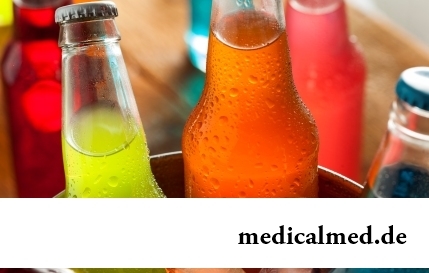
For anybody not a secret that the modern person eats not as his ancestors. For the last 100 years in broad access there were absolutely new products which are result of use of the latest technologies in food production. Significantly changed спо...
Section: Articles about health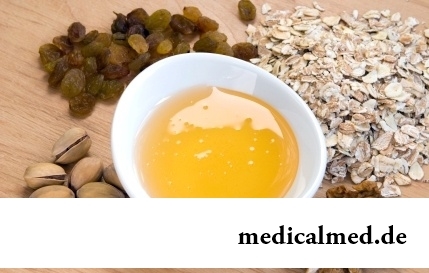
Let's begin with the fact that a separate illness which is called "adjournment of salts", just does not exist. In practice this household name of disbolism leading to development of a number of diseases. Pathological process consists that in an organism there is an accumulation of salts of uric acid (as a rule, owing to failure of a water salt metabolism or insufficiently effective work of secretory system)....
Section: Articles about health
Many of us, probably, noticed more than once that from intellectual loadings at some point the brain as though "overheats" also "assimilation"...
Section: Articles about health
The technique of acupuncture (acupuncture) is used in the medical purposes more than three and a half millennia. It is eurysynusic and recognized as official medicine in the majority of the developed countries of the world. Influence by fine needles on so-called points...
Section: Articles about health
Aging — natural and inevitable process. Over time our skin loses elasticity, on it saggings are formed, the face form loses former clearness. The procedure of nitevy lifting (nitevy tightening) can successfully solve this problem. In order that it is better to get acquainted with this popular procedure, we will tell you 6 cognitive facts about it....
Section: Articles about health
For the last decades the diabetes mellitus of the second type became really world problem. Number of cases annually cart...
Section: Articles about health
Since the moment when the child becomes a school student, his sight begins to be exposed to the strengthened loadings which are supplemented with viewing of animated films and long computer games. During this period of life of the child development not completely created bodies to a zra...
Section: Articles about health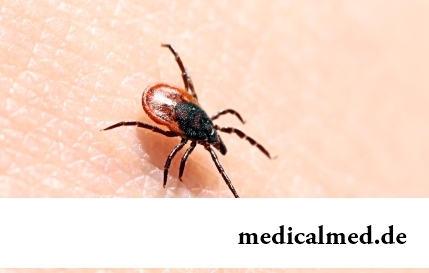
Tick-borne encephalitis – one of the most dangerous viral diseases which causative agents transfer and is given to people by ixodic mites. These are the small blood-sicking insects living in the considerable territory of our country. The person bitten by a tick can catch also erlikhiozy, bartonnelezy, babeziozy, mycoplasmosis and Lyme's disease. As well as encephalitis, these illnesses affect the central nervous system, and as specific antiviral therapy does not exist, the forecast very to a neuta...
Section: Articles about health
You heard that laughter prolongs life? To establish longevity direct link with sincere fun to researchers yet not удалос...
Section: Articles about health
The problem of diagnosis was and remains to one of the most important in medicine. From that, the reason of an indisposition of the patient will be how precisely defined, eventually success of treatment depends. In spite of the fact that the majority of the diagnostic methods applied in about...
Section: Articles about health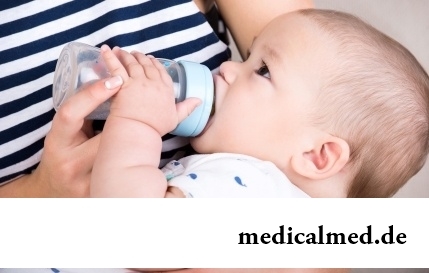
Producers of milk mixes for children assure: mixes are ideally balanced and adapted for needs of babies. If mother should raise artificially the kid owing to serious problems with health, to do nothing – it is necessary to feed with substitutes of milk. However pediatricians note that not seldom women without good reasons refuse feeding of the child a breast and pass to milk mixes. Common causes of such decision – the aspiration to leave quicker...
Section: Articles about health
What woman does not dream of a beautiful and thick hair? So far physicians developed difficult schemes on hair transplant, in the bet industry...
Section: Articles about health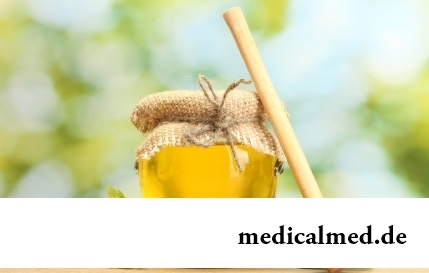
Bees – really unique beings. Practically all products of their life activity are used by the person. Since the most ancient times medicinal properties of honey and other substances received in the course of beekeeping are known. The fact that all these пр is especially significant...
Section: Articles about health
About influence of fasting days on an organism it is told much – both about advantages, and about shortcomings. It is considered that fasting day in the form of a short-term monodiet is useful, promoting effective removal of slags from an organism whereas irregular, excessively long, spontaneous fasting days lead only to deterioration in health. How to derive benefit from the sparing diet and not to do much harm to itself? Let's consider the main advantages and shortcomings of fasting days and their influence on an org...
Section: Articles about health
Cold is such painful that each sigh becomes a victory, heat "knocks" down, and the ache in joints forces to think only about...
Section: Articles about health
Small appetite at the child – the complaint which pediatricians should hear practically from each mother. Most often it is carried to the category of children's whims, however the refusal of food in certain cases can be to alarming symptoms therefore it cannot be ignored....
Section: Articles about health
Quite large number of people adheres to the principles of vegetarian food. But how to be if in a family of vegetarians there are children? Whether it is possible to eat also it the same as to parents, or after all the children's organism is not adapted for the use of exclusively vegetable food? Let's try to understand....
Section: Articles about health
